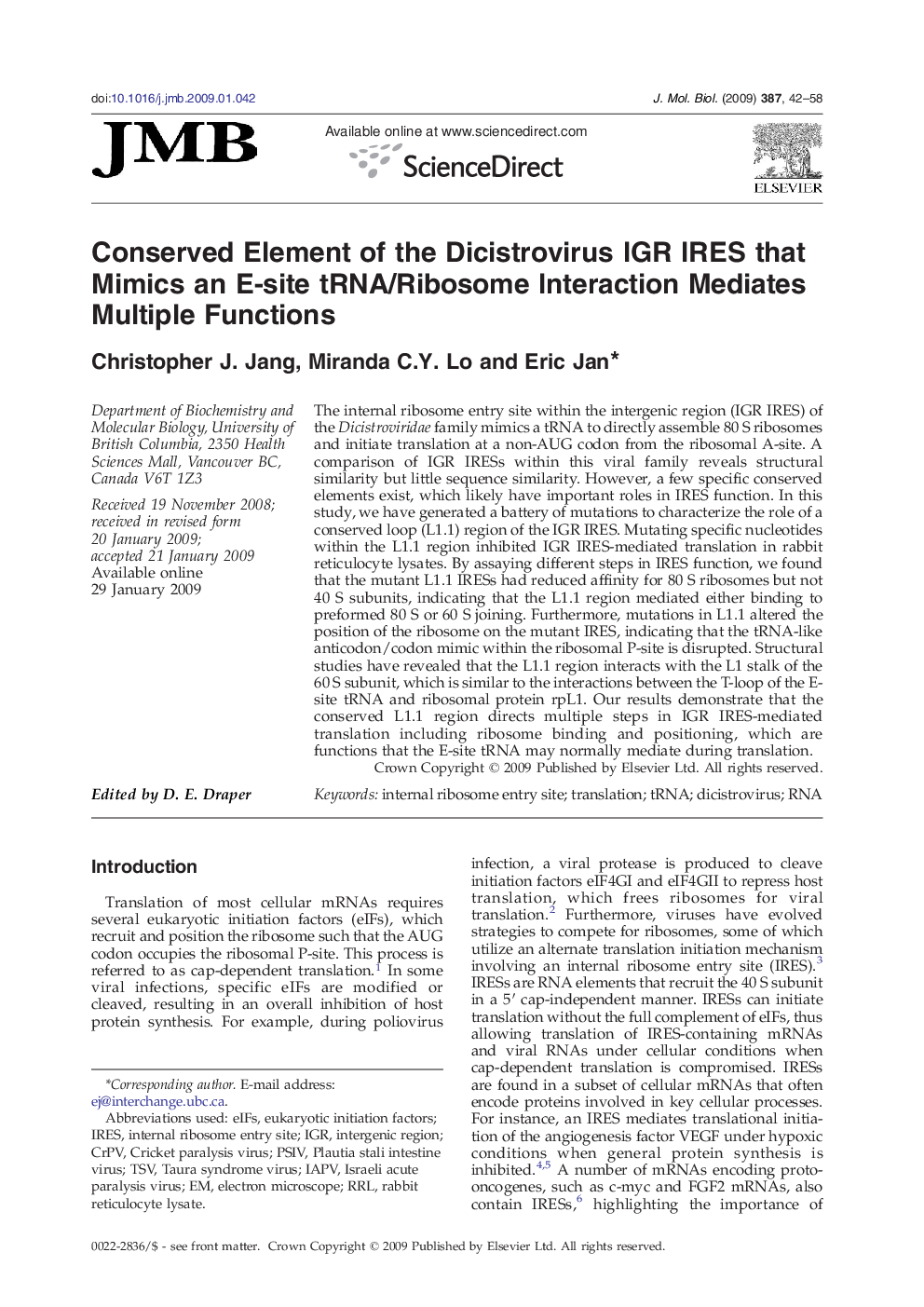| Article ID | Journal | Published Year | Pages | File Type |
|---|---|---|---|---|
| 2186922 | Journal of Molecular Biology | 2009 | 17 Pages |
The internal ribosome entry site within the intergenic region (IGR IRES) of the Dicistroviridae family mimics a tRNA to directly assemble 80 S ribosomes and initiate translation at a non-AUG codon from the ribosomal A-site. A comparison of IGR IRESs within this viral family reveals structural similarity but little sequence similarity. However, a few specific conserved elements exist, which likely have important roles in IRES function. In this study, we have generated a battery of mutations to characterize the role of a conserved loop (L1.1) region of the IGR IRES. Mutating specific nucleotides within the L1.1 region inhibited IGR IRES-mediated translation in rabbit reticulocyte lysates. By assaying different steps in IRES function, we found that the mutant L1.1 IRESs had reduced affinity for 80 S ribosomes but not 40 S subunits, indicating that the L1.1 region mediated either binding to preformed 80 S or 60 S joining. Furthermore, mutations in L1.1 altered the position of the ribosome on the mutant IRES, indicating that the tRNA-like anticodon/codon mimic within the ribosomal P-site is disrupted. Structural studies have revealed that the L1.1 region interacts with the L1 stalk of the 60 S subunit, which is similar to the interactions between the T-loop of the E-site tRNA and ribosomal protein rpL1. Our results demonstrate that the conserved L1.1 region directs multiple steps in IGR IRES-mediated translation including ribosome binding and positioning, which are functions that the E-site tRNA may normally mediate during translation.
